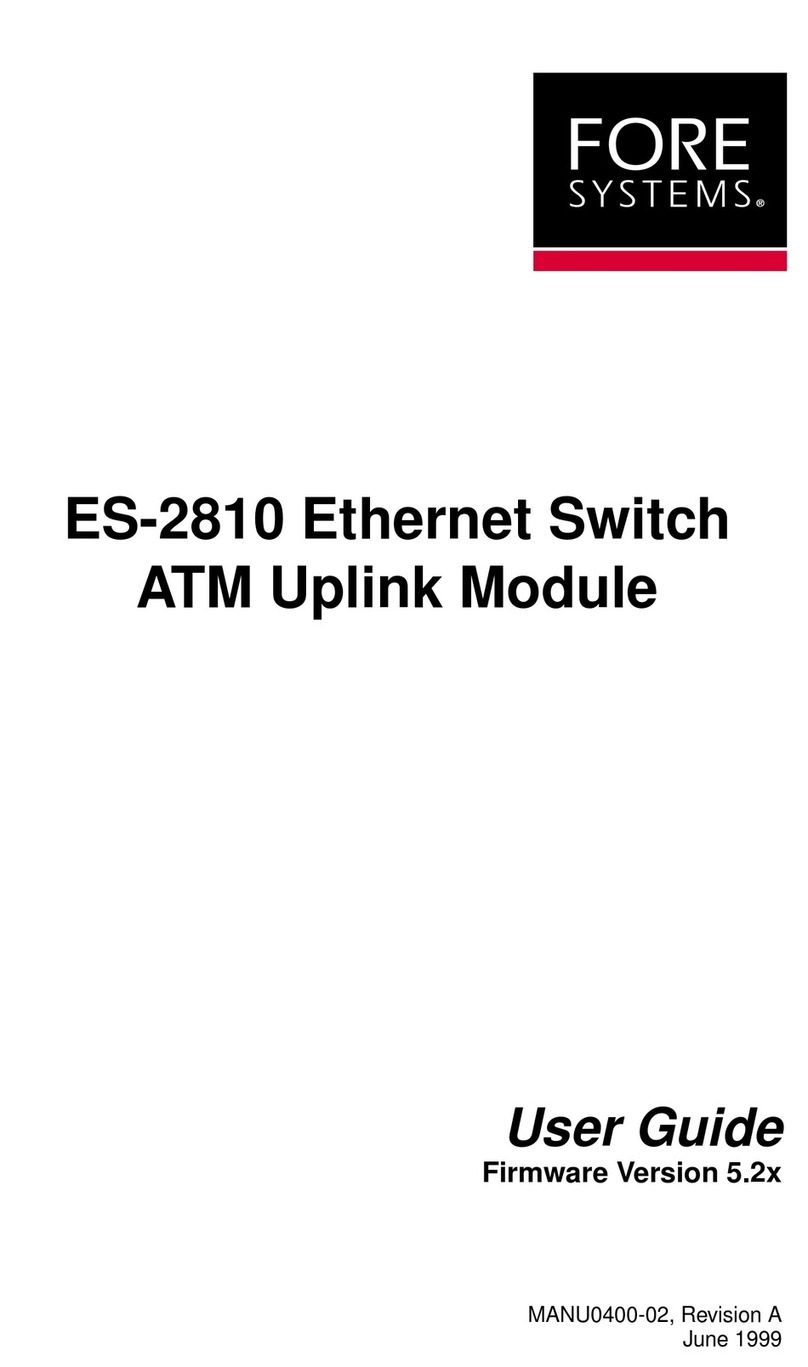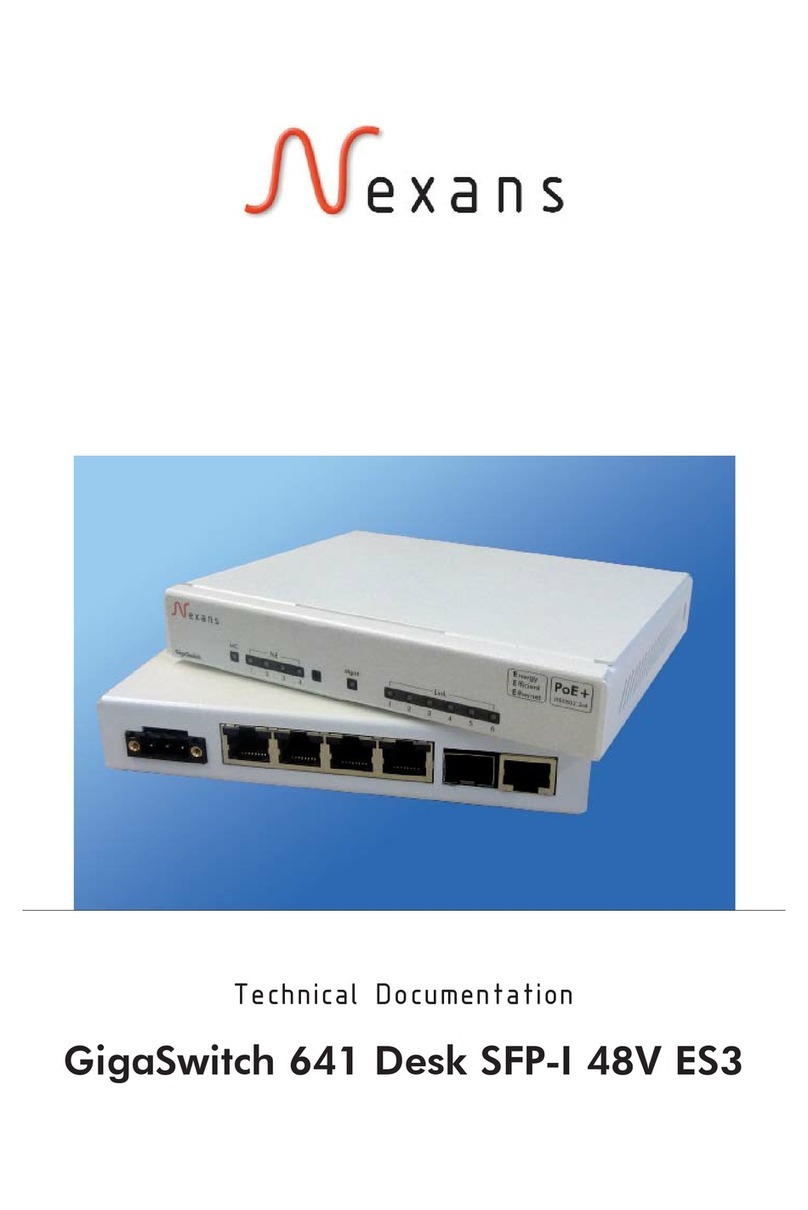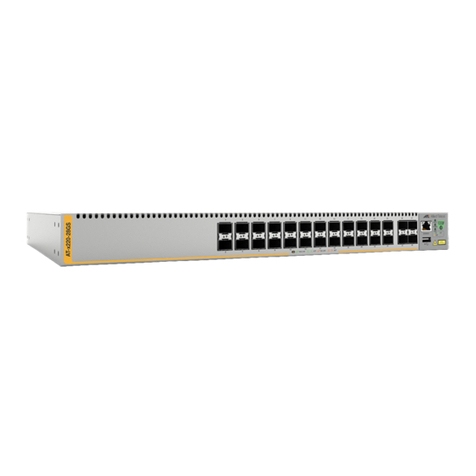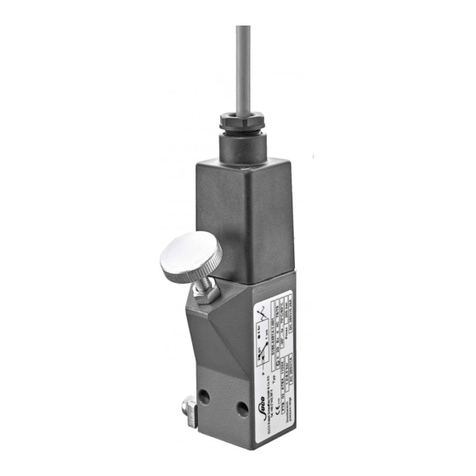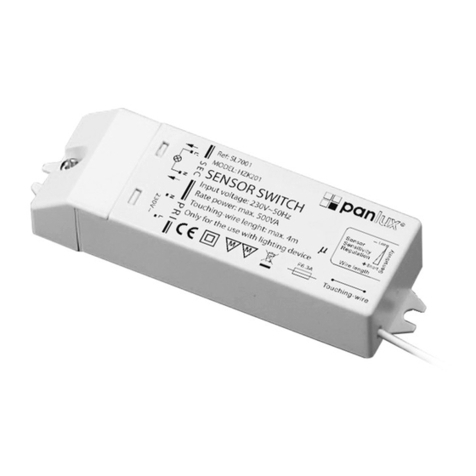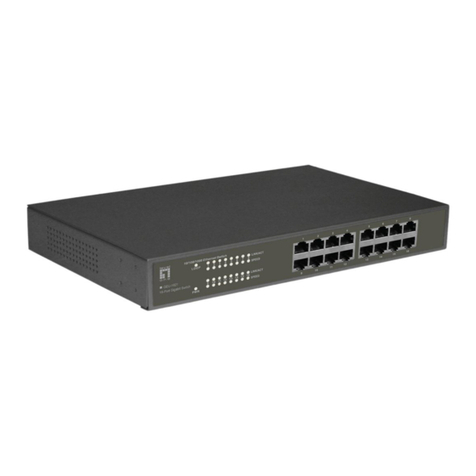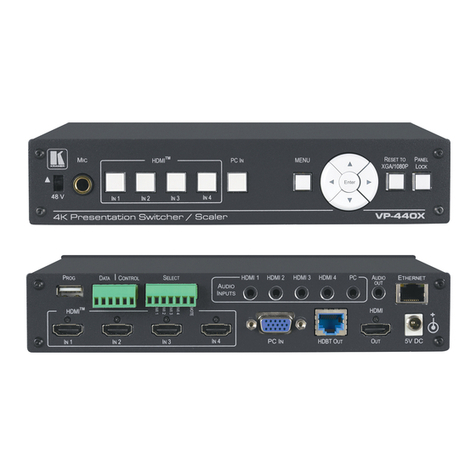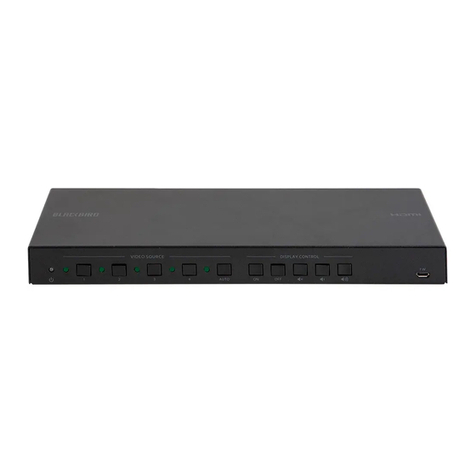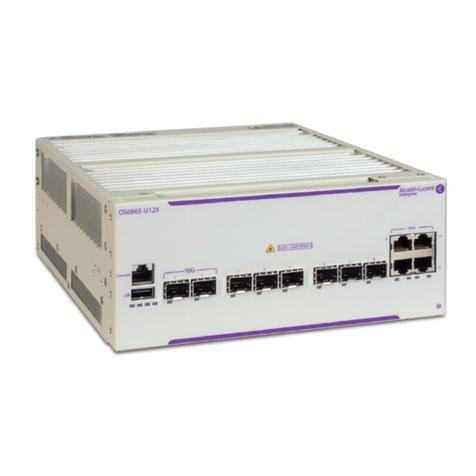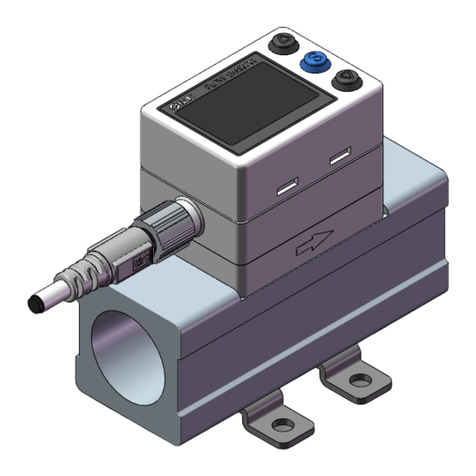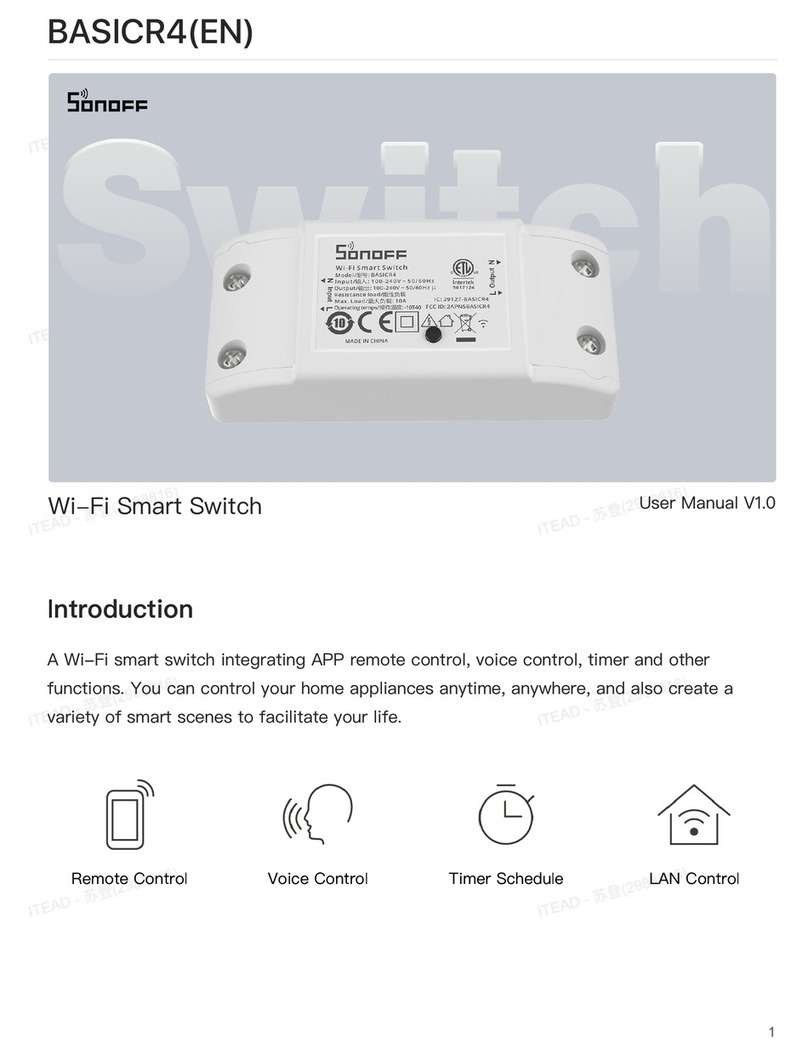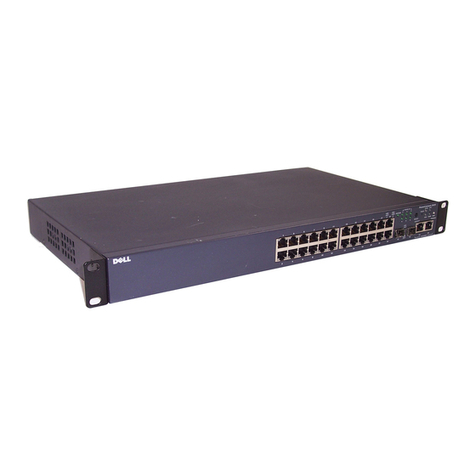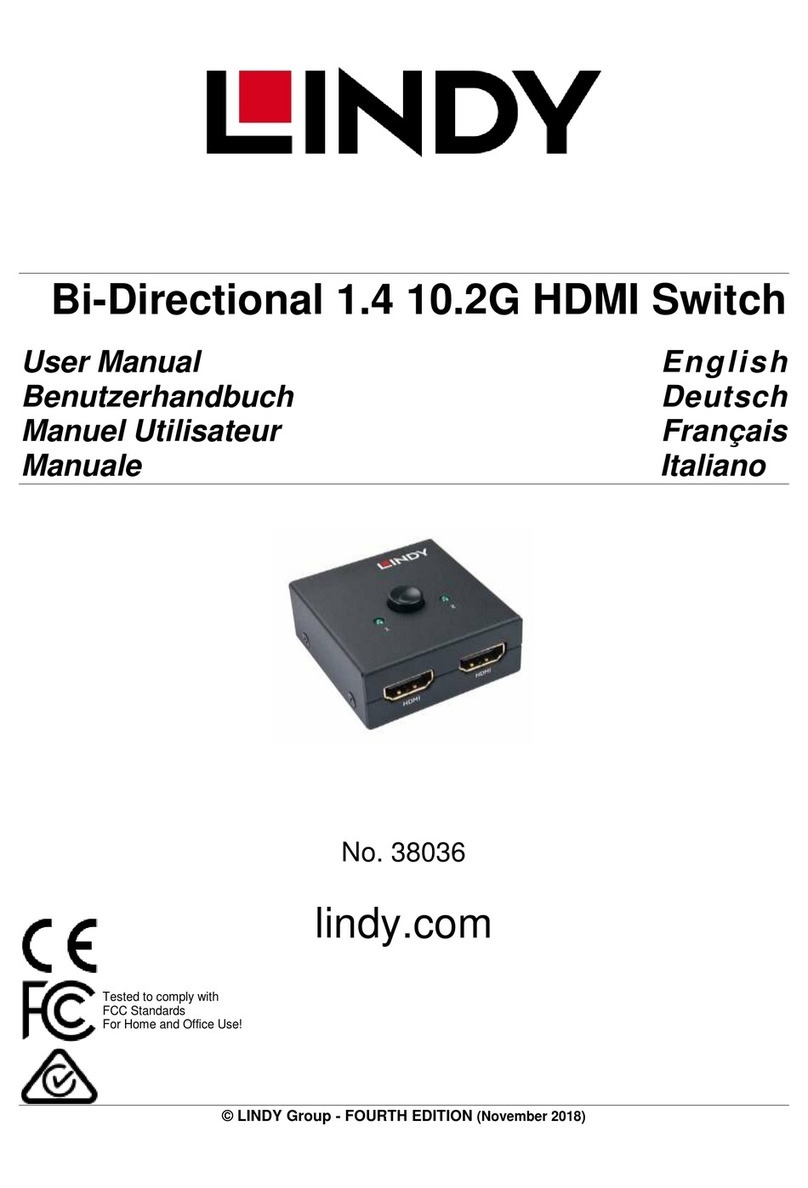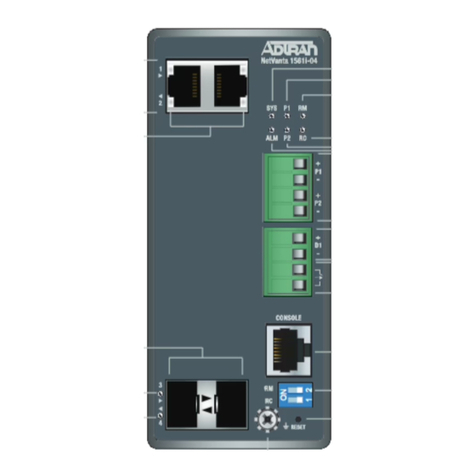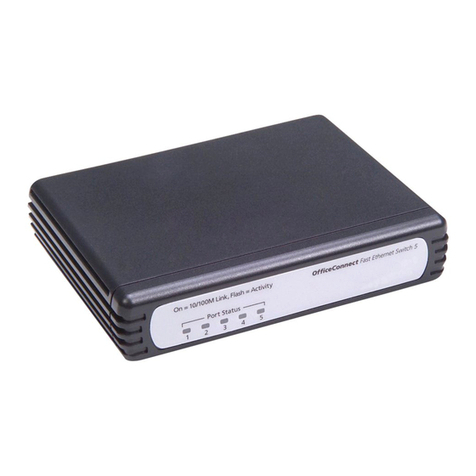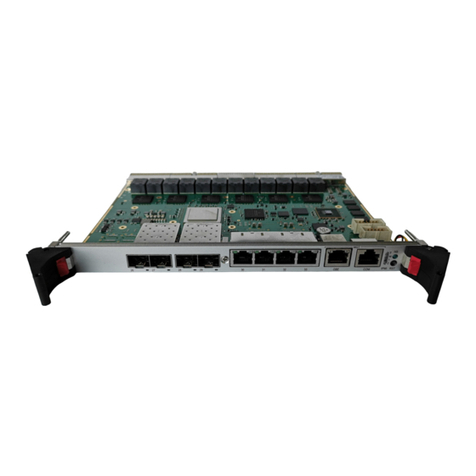Fore Systems ForeRunner ATM User manual

Legal Notices
Copyright © 1995-1997 FORE Systems, Inc. All rights reserved. FORE Systems is a registered trademark, and ForeRunner,
ForeView, ForeThought, ForeRunnerLE, PowerHub, and CellPath are trademarks of FORE Systems, Inc. All other brands or
product names are trademarks of their respective holders.
U.S. Government Restricted Rights.
If you are licensing the Software on behalf of the U.S. Government (“Government”),
the following provisions apply to you. If the Software is supplied to the Department of Defense (“DoD”), it is classified as
“Commercial Computer Software” under paragraph 252.227-7014 of the DoD Supplement to the Federal Acquisition Regu-
lations (“DFARS”) (or any successor regulations) and the Government is acquiring only the license rights granted herein
(the license rights customarily provided to non-Government users). If the Software is supplied to any unit or agency of the
Government other than DoD, it is classified as “Restricted Computer Software” and the Government’s rights in the Soft-
ware are defined in paragraph 52.227-19 of the Federal Acquisition Regulations (“FAR”) (or any successor regulations) or,
in the cases of NASA, in paragraph 18.52.227-86 of the NASA Supplement to the FAR (or any successor regulations).
Printed in the USA.
No part of this work covered by copyright may be reproduced in any form. Reproduction, adaptation, or translation with-
out prior written permission is prohibited, except as allowed under the copyright laws.
This publication is provided by FORE Systems, Inc. “as-is” without warranty of any kind, either express or implied, includ-
ing, but not limited to, the implied warranties or conditions of merchantability or fitness for a particular purpose. FORE
Systems, Inc. shall not be liable for any errors or omissions which may occur in this publication, nor for incidental or conse-
quential damages of any kind resulting from the furnishing, performance, or use of this publication.
Information published here is current or planned as of the date of publication of this document. Because we are improving
and adding features to our products continuously, the information in this document is subject to change without notice.
RESTRICTED RIGHTS LEGEND. Use, duplication, or disclosure by the government is subject to restrictions as set forth in
subparagraph (c)(1)(ii) of the Rights in Technical Data and Computer Software clause at DFARS 252.227-7013 (October
1988) and FAR 52.227-19 (June 1987).
The VxWorks software used in the Mini Loader is licensed from Wind River Systems, Inc., Copyright ©1984-1996.
FCC CLASS A NOTICE
WARNING: Changes or modifications to this unit not expressly approved by the party responsible for compliance could
void this user’s authority to operate this equipment.
NOTE: The ASX-200, the ASX-200WG, the ASX-200BX and the ASX-1000 have been tested and found to comply with the
limits for a Class A digital device, pursuant to Part 15 of the FCC Rules. These limits are designed to provide reasonable
protection against harmful interference when the equipment is operated in a commercial environment. This equipment
generates, uses, and can radiate radio frequency energy and, if not installed and used in accordance with the instruction
manual, may cause harmful interference to radio communications. Operation of the equipment in a residential area is
likely to cause harmful interference in which case the user will be required to correct the interference at his own expense.
DOC CLASS A NOTICE
This digital apparatus does not exceed Class A limits for radio noise emission for a digital device as set out in the Radio
Interference Regulations of the Canadian Department of Communications.
Le present appareil numerique n’emet pas de bruits radioelectriques depassant les limites applicables aux appareils nume-
riques de la class A prescrites dans le reglement sur le brouillage radioelectrique edicte par le ministere des Communica-
tions du Canada.

VCCI CLASS 1 NOTICE
This equipment is in the Class 1 category (Information Technology Equipment to be used in commercial and/or industrial
areas) and conforms to the standards set by the Voluntary Control Council For Interference by Information Technology
Equipment aimed at preventing radio interference in commercial and/or industrial areas.Consequently, when used in a
residential area or in an adjacent area thereto, radio interference may be caused to radios and TV receivers, etc. Read the
instructions for correct handling.
FCC REQUIREMENTS (Notice to Users of DS1 Service)
The following instructions are provided to ensure compliance with the Federal Communications Commission (FCC) Rules,
Part 68.
(1) This device must only be connected to the DS1 network connected behind an FCC Part 68
registered channel service unit. Direct connection is not allowed.
(2) Before connecting your unit, you must inform the telephone company of the following
information:
(3) If the unit appears to be malfunctioning, it should be disconnected from the telephone lines
until you learn if your equipment or the telephone line is the source of the trouble. If your
equipment needs repair, it should not be reconnected until it is repaired.
(4) If the telephone company finds that this equipment is exceeding tolerable parameters, the
telephone company can temporarily disconnect service, although they will attempt to give
you advance notice if possible.
(5) Under the FCC Rules, no customer is authorized to repair this equipment. This restriction
applies regardless of whether the equipment is in or out of warranty.
(6) If the telephone company alters their equipment in a manner that will affect use of this
device, they must give you advance warning so as to give you the opportunity for uninter-
rupted service. You will be advised of your right to file a complaint with the FCC.
Port ID REN/SOC FIC USOC
NM-6/DS1C 6.0N 04DU9-BN,
04DU9-DN, RJ48C
NM-2/DS1C 6.0N 04DU9-1ZN, and
04DU9-1SN RJ48C

CANADIAN IC CS-03 COMPLIANCE STATEMENT
NOTICE: The Industry Canada label identifies certified equipment. This certification means that the equipment meets cer-
tain telecommunications network protective, operational and safety requirements. The Industry Canada label does not
guarantee the equipment will operate to the user’s satisfaction.
Before installing this equipment, users should ensure that it is permissible to be connected to the facilities of the local tele-
communications company. The equipment must also be installed using an acceptable method of connection. In some cases,
the company’s inside wiring associated with a single line individual service may be extended by means of a certified con-
nector assembly (telephone extension cord). The customer should be aware that compliance with the above conditions may
not prevent degradation of service in some situations.
Repairs to certified equipment should be made by an authorized Canadian maintenance facility designated by the supplier.
Any repairs or alterations made by the user to this equipment, or equipment malfunctions, may give the telecommunica-
tions company cause to request the user to disconnect the equipment.
Users should ensure for their own protection that the electrical ground connections of the power utility, telephone lines and
internal metallic water pipe system, if present, are connected together. This precaution may be particularly important in
rural areas.
Caution: Users should not attempt to make such connections themselves, but should contact the appropriate electric
inspection authority, or electrician, as appropriate.
E1 AND E3 NOTICE
The E1 (NM-6/E1C and NM-2/E1C) and E3 (NM-4/E3C and NM-2/E3C) network modules that are described in this
manual are approved for use in FORE Systems’ host systems providing that the instructions below are strictly observed.
Failure to follow these instructions invalidates the approval.
Pan European Approval - CE Marking
Pan European approval of the E1 network module was issued by BABT following assessment against CTR12. This means
that it can be connected to ONP and unstructured PTO-provided private circuits with 120 Ω interfaces in all European
countries, according to Telecommunications Terminal Equipment (TTE) Directive 91/263/EEC. Thus, the following CE
mark applies:
The E1 and E3 network modules conform to safety standard EN60950 1992 following the provisions of Low Voltage
Product Safety Directive 73/23/EEC and CE Marking Directive 93/68/EEC, and can be marked accordingly with the CE
symbol.
The E1 and E3 network modules conform to EN55022 1994 and EN50082-1 1992 following the provisions of the EMC
Directive 89/336/EEC, and can be marked accordingly with the CE symbol.
1
68X

National Approvals
UK
Germany
Switzerland
Required User Guide Statements - UK Installation
The use of auxiliary products not authorized by FORE Systems in FORE Systems ATM Switches may cause the power spec-
ification to be exceeded and is a potential safety hazard.
The equipment must be installed such that with the exception of the connections to the host, clearance and creepage
distances shown in the table below are maintained between the network module and any other assemblies which use or
generate a voltage shown in the table below. The larger distance shown in brackets applies where the local environment
within the host is subject to conductive pollution or dry non-conductive pollution which could become conductive due to
condensation. Failure to maintain these minimum distances invalidates the approval.
NOTE: Installing the network modules in the appropriate FORE Systems hosts, according to the installation instructions
provided, satisfies the requirements listed above.
Network Module Connects to Approval Number
E1 Structured and unstructured
PTO-provided private circuits
with 75 Ω interfaces
AA60953
E3 PTO-provided private circuits
with 75 Ω interfaces NS/4387/1/T/605954
Network Module Connects to Approval Number
E3 Structured PTO-provided private circuits
with 75 Ω interfaces A127535H for the ASX-1000
A127534H for the ASX-200BX or ASX-200WG
Network Module Connects to Approval Number
E1 Structured PTO-provided private circuits
with 120 Ω interfaces 96.0872.J.N
E3 Structured PTO-provided private circuits
with 75 Ω interfaces 96.0873.J.N
Clearance (mm) Creepage (mm) Voltage Used or Generated
by Host or by Network Modules
2.0 2.4 (3.8) Up to 50 Vrms or Vdc
2.6 3.0 (4.8) Up to 125 Vrms or Vdc
4.0 5.0 (8.0) Up to 250 Vrms or Vdc
4.6 6.4 (10.0) Up to 300 Vrms or Vdc
For a host or other expansion card fitted in the host, using or generating voltages greater
than 300V (rms or dc), advice from a competent telecommunications engineer must be
obtained before installation of the relevant equipment.
Above 300 Vrms or Vdc

The following tables show the available ports and their safety status:
NM-6/E1C and NM-2/E1C
NM-4/E3C and NM-2/E3C
CE
NOTICE
Marking by the symbol CE indicates compliance of this system to the EMC (Electromagnetic Compatibility) directive of the
European Community and compliance to the Low Voltage (Safety) Directive. Such marking is indicative that this system
meets or exceeds the following technical standards:
• EN 55022 - “Limits and Methods of Measurement of Radio Interference Characteristics of Information Tech-
nology Equipment.”
• EN 50082-1 - “Electromagnetic compatibility - Generic immunity standard Part 1: Residential, commercial,
and light industry.”
• IEC 1000-4-2 - “Electromagnetic compatibility for industrial-process measurement and control equipment
Part 2: Electrostatic discharge requirements.”
• IEC 1000-4-3 - “Electromagnetic compatibility for industrial-process measurement and control equipment
Part 3: Radiate electromagnetic field requirements.”
• IEC 1000-4-4 - “Electromagnetic compatibility for industrial-process measurement and control equipment
Part 4: Electrical fast transient/burst requirements.”
SAFETY CERTIFICATIONS
ETL certified to meet Information Technology Equipment safety standards UL 1950, CSA 22.2 No. 950, and EN 60950.
Ports Safety Status
E1 Ports TNV operating at SELV
Bus Connector SELV
Ports Safety Status
E3 Ports TNV operating at SELV
Bus Connector SELV

TOC - 1
ForeRunner
ATM Switch User’s Manual
Table of Contents
Table of Contents
Preface
Chapter Summaries. . . . . . . . . . . . . . . . . . . . . . . . . . . . . . . . . . . . . . . . . . . . . . . . . . . . . . . . . . i
Technical Support . . . . . . . . . . . . . . . . . . . . . . . . . . . . . . . . . . . . . . . . . . . . . . . . . . . . . . . . . . .ii
Typographical Styles . . . . . . . . . . . . . . . . . . . . . . . . . . . . . . . . . . . . . . . . . . . . . . . . . . . . . . . . iii
Important Information Indicators . . . . . . . . . . . . . . . . . . . . . . . . . . . . . . . . . . . . . . . . . . . . . . . iv
Laser Notice . . . . . . . . . . . . . . . . . . . . . . . . . . . . . . . . . . . . . . . . . . . . . . . . . . . . . . . . . . . . . . .v
Safety Precautions. . . . . . . . . . . . . . . . . . . . . . . . . . . . . . . . . . . . . . . . . . . . . . . . . . . . . . . . . . vi
Modifications to Equipment . . . . . . . . . . . . . . . . . . . . . . . . . . . . . . . . . . . . . . . . . . . . vi
Placement of a FORE Systems Product . . . . . . . . . . . . . . . . . . . . . . . . . . . . . . . . . . vi
Power Cord Connection . . . . . . . . . . . . . . . . . . . . . . . . . . . . . . . . . . . . . . . . . . . . . . .vii
CHAPTER 1 Switch Hardware
1.1 Switch Hardware Configurations . . . . . . . . . . . . . . . . . . . . . . . . . . . . . . . . . . . . . . 1 - 2
1.2 Switch Hardware Components. . . . . . . . . . . . . . . . . . . . . . . . . . . . . . . . . . . . . . . .1 - 4
1.2.1 Switch Board . . . . . . . . . . . . . . . . . . . . . . . . . . . . . . . . . . . . . . . . . . . . .1 - 4
1.2.2 Switch Control Processor. . . . . . . . . . . . . . . . . . . . . . . . . . . . . . . . . . . . 1 - 4
1.2.2.1 SPARC RISC Switch Control Processor . . . . . . . . . . . . . . . . . . 1 - 4
1.2.2.1.1 RESET Switch . . . . . . . . . . . . . . . . . . . . . . . . . . . . . 1 - 5
1.2.2.1.2 ABORT Switch . . . . . . . . . . . . . . . . . . . . . . . . . . . . .1 - 5
1.2.2.1.3 RUN/RESET LED. . . . . . . . . . . . . . . . . . . . . . . . . . .1 - 5
1.2.2.1.4 VME BM LED . . . . . . . . . . . . . . . . . . . . . . . . . . . . . . 1 - 5
1.2.2.1.5 STATUS LED . . . . . . . . . . . . . . . . . . . . . . . . . . . . . .1 - 5
1.2.2.1.6 Diagnostics Display . . . . . . . . . . . . . . . . . . . . . . . . .1 - 5
1.2.2.1.7 RS-232 Serial Ports . . . . . . . . . . . . . . . . . . . . . . . . .1 - 5
1.2.2.1.8 Ethernet AUI Port . . . . . . . . . . . . . . . . . . . . . . . . . . .1 - 6
1.2.2.2 i960 Switch Control Processor . . . . . . . . . . . . . . . . . . . . . . . . .1 - 6
1.2.2.2.1 RESET Button . . . . . . . . . . . . . . . . . . . . . . . . . . . . . 1 - 6
1.2.2.2.2 RS-232 Serial Port . . . . . . . . . . . . . . . . . . . . . . . . . . 1 - 6
1.2.2.2.3 Ethernet 10BaseT Port. . . . . . . . . . . . . . . . . . . . . . . 1 - 7
1.2.2.2.4 CTL Port . . . . . . . . . . . . . . . . . . . . . . . . . . . . . . . . . . 1 - 8
1.2.2.2.5 NEXT Pushbutton. . . . . . . . . . . . . . . . . . . . . . . . . . . 1 - 8
1.2.2.2.6 SELECT Pushbutton. . . . . . . . . . . . . . . . . . . . . . . . . 1 - 8
1.2.2.2.7 Display LED . . . . . . . . . . . . . . . . . . . . . . . . . . . . . . . 1 - 8
1.2.2.2.8 Power LED . . . . . . . . . . . . . . . . . . . . . . . . . . . . . . . . 1 - 9

TOC - 2
ForeRunner
ATM Switch User’s Manual
Table of Contents
1.2.3 Dual SCP Setup . . . . . . . . . . . . . . . . . . . . . . . . . . . . . . . . . . . . . . . . . . 1 - 9
1.2.3.1 Adding a Standby SCP. . . . . . . . . . . . . . . . . . . . . . . . . . . . . . 1 - 10
1.2.3.2 Rebooting the Controlling SCP. . . . . . . . . . . . . . . . . . . . . . . . 1 - 11
1.2.3.3 Ethernet Connection. . . . . . . . . . . . . . . . . . . . . . . . . . . . . . . . 1 - 11
1.2.4 Network Modules. . . . . . . . . . . . . . . . . . . . . . . . . . . . . . . . . . . . . . . . . 1 - 11
1.2.4.1 Port Numbering . . . . . . . . . . . . . . . . . . . . . . . . . . . . . . . . . . . 1 - 12
1.2.5 Power Supply Modules . . . . . . . . . . . . . . . . . . . . . . . . . . . . . . . . . . . . 1 - 13
1.2.5.1 ASX-200BX AC Power Supply . . . . . . . . . . . . . . . . . . . . . . . . 1 - 13
1.2.5.2 ASX-200BX -48 Volt DC Power Supply . . . . . . . . . . . . . . . . . 1 - 14
1.2.5.3 ASX-1000 AC Power Supply (Model A) . . . . . . . . . . . . . . . . . 1 - 16
1.2.5.3.1 Power Supply LEDs. . . . . . . . . . . . . . . . . . . . . . . . 1 - 16
1.2.5.3.2 Shutdown Conditions. . . . . . . . . . . . . . . . . . . . . . . 1 - 17
1.2.5.4 ASX-1000 AC Power Supply (Model B) . . . . . . . . . . . . . . . . . 1 - 18
1.2.5.4.1 Power Supply LEDs. . . . . . . . . . . . . . . . . . . . . . . . 1 - 18
1.2.5.4.2 Shutdown Conditions. . . . . . . . . . . . . . . . . . . . . . . 1 - 19
1.2.5.5 ASX-1000 -48 Volt DC Power Supply. . . . . . . . . . . . . . . . . . . 1 - 20
1.2.6 ASX-1000 Fan Tray . . . . . . . . . . . . . . . . . . . . . . . . . . . . . . . . . . . . . . . 1 - 21
1.2.7 ASX-1000 Temperature Sensing. . . . . . . . . . . . . . . . . . . . . . . . . . . . . 1 - 21
1.2.8 ASX-1000 Common Equipment Card (CEC). . . . . . . . . . . . . . . . . . . . 1 - 22
1.2.8.1 CEC Front Panel. . . . . . . . . . . . . . . . . . . . . . . . . . . . . . . . . . . 1 - 22
1.2.8.2 Alarm Relay Contacts. . . . . . . . . . . . . . . . . . . . . . . . . . . . . . . 1 - 23
1.2.8.3 CEC Status LEDs. . . . . . . . . . . . . . . . . . . . . . . . . . . . . . . . . . 1 - 25
1.2.8.3.1 Alarm LEDs . . . . . . . . . . . . . . . . . . . . . . . . . . . . . . 1 - 26
1.2.8.3.2 Power Supply LEDs. . . . . . . . . . . . . . . . . . . . . . . . 1 - 27
1.2.8.3.3 Switch Board LEDs . . . . . . . . . . . . . . . . . . . . . . . . 1 - 27
1.2.8.4 Ethernet Port . . . . . . . . . . . . . . . . . . . . . . . . . . . . . . . . . . . . . 1 - 27
CHAPTER 2 Switch Setup
2.1 Introduction . . . . . . . . . . . . . . . . . . . . . . . . . . . . . . . . . . . . . . . . . . . . . . . . . . . . . . 2 - 1
2.2 Unpacking . . . . . . . . . . . . . . . . . . . . . . . . . . . . . . . . . . . . . . . . . . . . . . . . . . . . . . . 2 - 2
2.2.1 Inventorying the Unit . . . . . . . . . . . . . . . . . . . . . . . . . . . . . . . . . . . . . . . 2 - 2
2.3 Electrical Considerations. . . . . . . . . . . . . . . . . . . . . . . . . . . . . . . . . . . . . . . . . . . . 2 - 3
2.4 Rack-Mounting an ASX-200, 200WG, or 200BX. . . . . . . . . . . . . . . . . . . . . . . . . . 2 - 4
2.4.1 Required Tools. . . . . . . . . . . . . . . . . . . . . . . . . . . . . . . . . . . . . . . . . . . . 2 - 4
2.4.2 Installing the Rack-mount Brackets. . . . . . . . . . . . . . . . . . . . . . . . . . . . 2 - 5
2.5 Rack-Mounting an ASX-1000 . . . . . . . . . . . . . . . . . . . . . . . . . . . . . . . . . . . . . . . . 2 - 7
2.5.1 Installing the ASX-1000. . . . . . . . . . . . . . . . . . . . . . . . . . . . . . . . . . . . . 2 - 8
2.6 Installing the Serial Cable . . . . . . . . . . . . . . . . . . . . . . . . . . . . . . . . . . . . . . . . . . . 2 - 9

TOC - 3
ForeRunner
ATM Switch User’s Manual
Table of Contents
Table of Contents
2.7 Modem Configuration . . . . . . . . . . . . . . . . . . . . . . . . . . . . . . . . . . . . . . . . . . . . . .2 - 10
2.7.1 Serial Port Configuration for an ASX-200. . . . . . . . . . . . . . . . . . . . . . .2 - 10
2.7.2 Modem Parameters . . . . . . . . . . . . . . . . . . . . . . . . . . . . . . . . . . . . . . .2 - 11
2.8 Configuring IP Addresses. . . . . . . . . . . . . . . . . . . . . . . . . . . . . . . . . . . . . . . . . . . 2 - 12
2.9 AMI Security. . . . . . . . . . . . . . . . . . . . . . . . . . . . . . . . . . . . . . . . . . . . . . . . . . . . . 2 - 13
2.10 Subsequent Operation . . . . . . . . . . . . . . . . . . . . . . . . . . . . . . . . . . . . . . . . . . . . . 2 - 14
2.11 Verifying the Installation . . . . . . . . . . . . . . . . . . . . . . . . . . . . . . . . . . . . . . . . . . . . 2 - 15
2.12 Product Registration Information . . . . . . . . . . . . . . . . . . . . . . . . . . . . . . . . . . . . .2 - 15
CHAPTER 3 Hardware Maintenance Procedures
3.1 Network Module Replacement . . . . . . . . . . . . . . . . . . . . . . . . . . . . . . . . . . . . . . . . 3 - 1
3.1.1 Overview. . . . . . . . . . . . . . . . . . . . . . . . . . . . . . . . . . . . . . . . . . . . . . . . . 3 - 1
3.1.2 Multicast Mode . . . . . . . . . . . . . . . . . . . . . . . . . . . . . . . . . . . . . . . . . . . . 3 - 2
3.1.3 Hot-swapping Network Modules. . . . . . . . . . . . . . . . . . . . . . . . . . . . . . .3 - 3
3.2 Power Supply Module Replacement. . . . . . . . . . . . . . . . . . . . . . . . . . . . . . . . . . . . 3 - 4
3.2.1 ASX-200BX Power Supply Module Replacement . . . . . . . . . . . . . . . . .3 - 4
3.2.1.1 Replacing an ASX-200BX AC Power Supply. . . . . . . . . . . . . . . 3 - 4
3.2.1.2 Replacing an ASX-200BX DC Power Supply . . . . . . . . . . . . . . 3 - 6
3.2.2 ASX-1000 Power Supply Module Replacement . . . . . . . . . . . . . . . . . . .3 - 8
3.2.2.1 Replacing an ASX-1000 AC Power Supply (Model A). . . . . . . .3 - 8
3.2.2.2 Replacing an ASX-1000 AC Power Supply (Model B). . . . . . .3 - 11
3.2.2.3 Replacing an ASX-1000 DC Power Supply. . . . . . . . . . . . . . .3 - 14
3.3 ASX-1000 Fan Tray Replacement. . . . . . . . . . . . . . . . . . . . . . . . . . . . . . . . . . . . .3 - 17
3.4 Switch Control Processor Replacement. . . . . . . . . . . . . . . . . . . . . . . . . . . . . . . .3 - 18
3.5 Switch Board Replacement . . . . . . . . . . . . . . . . . . . . . . . . . . . . . . . . . . . . . . . . . 3 - 20
CHAPTER 4 Software Upgrade Instructions
4.1 Obtaining the Software Upgrade File . . . . . . . . . . . . . . . . . . . . . . . . . . . . . . . . . . . 4 - 2
4.1.1 Obtaining the Software Upgrade File via FTP . . . . . . . . . . . . . . . . . . . .4 - 2
4.1.2 Obtaining the Software Upgrade File via Diskette . . . . . . . . . . . . . . . . . 4 - 4
4.2 Requirements for Upgrading an ASX-200WG . . . . . . . . . . . . . . . . . . . . . . . . . . . . 4 - 6
4.2.1 Downloading the Mini Loader Software . . . . . . . . . . . . . . . . . . . . . . . . . 4 - 6
4.2.2 Emptying the FLASH . . . . . . . . . . . . . . . . . . . . . . . . . . . . . . . . . . . . . . . 4 - 7
4.2.3 Upgrading the Switch to Mini Loader . . . . . . . . . . . . . . . . . . . . . . . . . . .4 - 7
4.2.4 Deleting the Active Switch Software. . . . . . . . . . . . . . . . . . . . . . . . . . . .4 - 8
4.3 Performing the Software Upgrade . . . . . . . . . . . . . . . . . . . . . . . . . . . . . . . . . . . . . 4 - 9
4.4 Loading the New Software Image onto the ASX-200 . . . . . . . . . . . . . . . . . . . . . . 4 - 12
4.5 Changing between Multiple Versions of Software . . . . . . . . . . . . . . . . . . . . . . . . 4 - 14

TOC - 4
ForeRunner
ATM Switch User’s Manual
Table of Contents
4.6 Booting and Upgrading with Mini Loader. . . . . . . . . . . . . . . . . . . . . . . . . . . . . . . 4 - 16
4.6.1 Setting the IP Address of the Switch. . . . . . . . . . . . . . . . . . . . . . . . . . 4 - 18
4.6.2 Setting the Gateway Address . . . . . . . . . . . . . . . . . . . . . . . . . . . . . . . 4 - 18
4.6.3 Performing the Upgrade . . . . . . . . . . . . . . . . . . . . . . . . . . . . . . . . . . . 4 - 19
4.7 Using bootp to Download Software to the Switch . . . . . . . . . . . . . . . . . . . . . . . . 4 - 21
4.7.1 Overview . . . . . . . . . . . . . . . . . . . . . . . . . . . . . . . . . . . . . . . . . . . . . . . 4 - 22
4.7.2 Setting Up a bootp Server. . . . . . . . . . . . . . . . . . . . . . . . . . . . . . . . . . 4 - 22
4.7.3 Adding a Switch Entry in the bootptab File . . . . . . . . . . . . . . . . . . . . . 4 - 23
4.7.4 Setting Up a TFTP Server. . . . . . . . . . . . . . . . . . . . . . . . . . . . . . . . . . 4 - 25
APPENDIX A Troubleshooting
A.1 Adapter Hardware Troubleshooting . . . . . . . . . . . . . . . . . . . . . . . . . . . . . . . . . . . . A - 1
A.1.1 Run Looptest. . . . . . . . . . . . . . . . . . . . . . . . . . . . . . . . . . . . . . . . . . . . . A - 3
A.1.2 Check Self-Test (Automatically Performed) . . . . . . . . . . . . . . . . . . . . . . A - 4
A.1.3 Firmware Download (Automatically Performed) . . . . . . . . . . . . . . . . . . A - 4
A.1.4 Hardware Detected by Driver . . . . . . . . . . . . . . . . . . . . . . . . . . . . . . . . A - 4
A.1.5 Check Firmware . . . . . . . . . . . . . . . . . . . . . . . . . . . . . . . . . . . . . . . . . . A - 5
A.1.6 Check Physical Link. . . . . . . . . . . . . . . . . . . . . . . . . . . . . . . . . . . . . . . . A - 6
A.2 Testing Network Connectivity Using PVCs . . . . . . . . . . . . . . . . . . . . . . . . . . . . . . A - 7
A.2.1 Verifying the Outgoing ATM ARP Entry. . . . . . . . . . . . . . . . . . . . . . . . . A - 9
A.2.2 atmstat. . . . . . . . . . . . . . . . . . . . . . . . . . . . . . . . . . . . . . . . . . . . . . . . . A - 10
A.2.2.1 No Cells Received by Remote End . . . . . . . . . . . . . . . . . . . . A - 11
A.2.2.2 Cells and VPI/VCI Errors Received by Remote . . . . . . . . . . . A - 11
A.2.2.3 Cells and AAL* Errors Received by Remote . . . . . . . . . . . . . A - 11
A.2.2.4 Cells and No Errors Received by Remote and
Transmitting No Cells . . . . . . . . . . . . . . . . . . . . . . . . . . . . . . . A - 12
A.2.2.5 Cells and No Errors Received by Remote and
Transmitting Cells . . . . . . . . . . . . . . . . . . . . . . . . . . . . . . . . . . A - 12
A.3 Collecting Additional Information. . . . . . . . . . . . . . . . . . . . . . . . . . . . . . . . . . . . . A - 13
A.3.1 Basic Information. . . . . . . . . . . . . . . . . . . . . . . . . . . . . . . . . . . . . . . . . A - 13
A.3.2 Adapter Information. . . . . . . . . . . . . . . . . . . . . . . . . . . . . . . . . . . . . . . A - 13
A.3.3 Switch Information. . . . . . . . . . . . . . . . . . . . . . . . . . . . . . . . . . . . . . . . A - 16

TOC - 5
ForeRunner
ATM Switch User’s Manual
Table of Contents
Table of Contents
APPENDIX B SCP Diagnostics
B.1 ASX-200WG, ASX-200BX, ASX-1000 Diagnostics . . . . . . . . . . . . . . . . . . . . . . . .B - 1
B.1.1 Accessing the Monitor Mode . . . . . . . . . . . . . . . . . . . . . . . . . . . . . . . . .B - 2
B.1.2 Running the Hardware Tests . . . . . . . . . . . . . . . . . . . . . . . . . . . . . . . . .B - 4
B.1.2.1 Clock Test . . . . . . . . . . . . . . . . . . . . . . . . . . . . . . . . . . . . . . . . .B - 4
B.1.2.2 DRAM Test . . . . . . . . . . . . . . . . . . . . . . . . . . . . . . . . . . . . . . . .B - 4
B.1.2.3 DRAM Chip Test . . . . . . . . . . . . . . . . . . . . . . . . . . . . . . . . . . . .B - 5
B.1.2.4 Ethernet Test . . . . . . . . . . . . . . . . . . . . . . . . . . . . . . . . . . . . . . .B - 5
B.1.2.5 FLASH Test . . . . . . . . . . . . . . . . . . . . . . . . . . . . . . . . . . . . . . . .B - 5
B.1.2.6 FLASH Chip Test. . . . . . . . . . . . . . . . . . . . . . . . . . . . . . . . . . . .B - 6
B.1.2.7 Serial Port Test . . . . . . . . . . . . . . . . . . . . . . . . . . . . . . . . . . . . .B - 7
B.1.2.8 SRAM Test. . . . . . . . . . . . . . . . . . . . . . . . . . . . . . . . . . . . . . . . .B - 7
B.1.2.9 Timer Test . . . . . . . . . . . . . . . . . . . . . . . . . . . . . . . . . . . . . . . . .B - 7
B.1.2.10 Hardware Test . . . . . . . . . . . . . . . . . . . . . . . . . . . . . . . . . . . . . .B - 7
B.1.2.11 Complete Hardware Test. . . . . . . . . . . . . . . . . . . . . . . . . . . . . .B - 8
B.2 SCP-ASXHA Diagnostics. . . . . . . . . . . . . . . . . . . . . . . . . . . . . . . . . . . . . . . . . . . .B - 9
B.3 ASX-200 Diagnostics . . . . . . . . . . . . . . . . . . . . . . . . . . . . . . . . . . . . . . . . . . . . . .B - 10
APPENDIX C Hardware Specifications
C.1
ForeRunner
ATM Switches. . . . . . . . . . . . . . . . . . . . . . . . . . . . . . . . . . . . . . . . . . .C - 1
C.1.1
ForeRunner
ASX-200. . . . . . . . . . . . . . . . . . . . . . . . . . . . . . . . . . . . . . .C - 2
C.1.2
ForeRunner
ASX-200WG. . . . . . . . . . . . . . . . . . . . . . . . . . . . . . . . . . . .C - 3
C.1.3
ForeRunner
ASX-200BX . . . . . . . . . . . . . . . . . . . . . . . . . . . . . . . . . . . .C - 4
C.1.4
ForeRunner
ASX-1000. . . . . . . . . . . . . . . . . . . . . . . . . . . . . . . . . . . . . .C - 5
C.2
ForeRunner
ATM Network Modules . . . . . . . . . . . . . . . . . . . . . . . . . . . . . . . . . . . .C - 6
C.2.1 100 Mbps TAXI Module . . . . . . . . . . . . . . . . . . . . . . . . . . . . . . . . . . . . .C - 6
C.2.2 155 Mbps OC-3c/STM-1 MM Module. . . . . . . . . . . . . . . . . . . . . . . . . . .C - 7
C.2.3 155 Mbps STS-3c/STM-1 UTP Module . . . . . . . . . . . . . . . . . . . . . . . . .C - 8
C.2.3.1 155 Mbps UTP Pinout Specifications . . . . . . . . . . . . . . . . . . . .C - 9
C.2.3.2 Connecting Switches with 155 Mbps UTP Network Modules . .C - 9
C.2.4 622 Mbps OC-12c/STM-4c MM Module. . . . . . . . . . . . . . . . . . . . . . . .C - 10
C.2.5 1.5 Mbps DS1 Module . . . . . . . . . . . . . . . . . . . . . . . . . . . . . . . . . . . . .C - 11
C.2.6 1.5 Mbps DS1 Circuit Emulation Services Module. . . . . . . . . . . . . . . .C - 12
C.2.6.1 DS1 Pinout Specifications. . . . . . . . . . . . . . . . . . . . . . . . . . . .C - 13
C.2.7 2 Mbps E1 Module . . . . . . . . . . . . . . . . . . . . . . . . . . . . . . . . . . . . . . . .C - 14
C.2.7.1 E1 Pinout Specifications . . . . . . . . . . . . . . . . . . . . . . . . . . . . .C - 15
C.2.8 6 Mbps J2 Module . . . . . . . . . . . . . . . . . . . . . . . . . . . . . . . . . . . . . . . .C - 16

TOC - 6
ForeRunner
ATM Switch User’s Manual
Table of Contents
C.2.9 25 Mbps TP25 Module . . . . . . . . . . . . . . . . . . . . . . . . . . . . . . . . . . . . C - 17
C.2.9.1 Connecting Switches with TP25 Network Modules . . . . . . . . C - 18
C.2.9.2 Connecting Switches with Token Ring Pinouts to
ForeRunner
Switches. . . . . . . . . . . . . . . . . . . . . . . . . . . . . . . C - 18
C.2.9.3 Connecting Adapters with Token Ring Pinouts to
ForeRunner
Switches. . . . . . . . . . . . . . . . . . . . . . . . . . . . . . . C - 19
C.2.10 34 Mbps E3 Module . . . . . . . . . . . . . . . . . . . . . . . . . . . . . . . . . . . . . . C - 20
C.2.11 45 Mbps DS3 Module . . . . . . . . . . . . . . . . . . . . . . . . . . . . . . . . . . . . . C - 21
C.2.12 155 Mbps OC-3c/STM-1 SM Module . . . . . . . . . . . . . . . . . . . . . . . . . C - 22
C.2.13 155 Mbps OC-3c/STM-1 3MM/1SM Module . . . . . . . . . . . . . . . . . . . . C - 23
C.2.14 622 Mbps OC-12c/STM-4c SM Module. . . . . . . . . . . . . . . . . . . . . . . . C - 25
Acronyms
Glossary
Index

ForeRunner
ATM Switch User’s Manual i
Preface
Preface
This manual provides the technical information needed to install ForeRunnerTM ATM
Switches, ForeRunner LAN and WANnetwork modules, and the accompanying ForeThoughtTM
software. This document also provides safety instructions, general product information, diag-
nostic information, and troubleshooting information. This document was created for users
with various levels of experience. If you have any questions or problems with the installation,
please contact FORE Systems’ Technical Support.
Chapter Summaries
Chapter 1 - Switch Hardware - Provides a description of the various ForeRunner ATM switch
hardware components.
Chapter 2 - Switch Setup - Provides information for the installation of a switch and how to
verify a successful installation.
Chapter 3 - Hardware Maintenance Procedures - Describes the hot-swap replacement pro-
cedures for the switch and network modules.
Chapter 4 - Software Upgrade Instructions - Describes how to configure a TFTP server,
upgrade switch software, and change between multiple versions of software.
Appendix A - Troubleshooting - Contains basic troubleshooting information for switches
and adapters.
Appendix B - SCP Diagnostics - Describes the diagnostic software for the SCP.
Appendix C - Hardware Specifications - Provides cabling, pinout, hardware, and general
operating specifications for ForeRunner ATM switches and network modules.

ii
ForeRunner
ATM Switch User’s Manual
Preface
Technical Support
In the U.S.A., you can contact FORE Systems’ Technical Support using any one of the follow-
ing methods:
1. If you have access to the Internet, you may contact FORE Systems’ Technical Sup-
port via e-mail at:
support@fore.com
2. You may FAX your questions to “support” at:
412-742-7900
3. You may send questions, via U.S. Mail, to:
FORE Systems, Inc.
1000 FORE Drive
Warrendale, PA 15086
4. You may telephone your questions to “support” at:
800-671-FORE (3673) or 412-635-3700
Technical support for non-U.S.A. customers should be handled through your local distributor.
No matter which method is used for support, please be prepared to provide your support con-
tract ID number, the serial number(s) of the product(s), and as much information as possible
describing your problem/question.

Preface
ForeRunner
ATM Switch User’s Manual iii
Preface
Typographical Styles
Throughout this manual, all specific commands meant to be entered by the user appear on a
separate line in bold typeface. In addition, use of the Enter or Return key is represented as
<ENTER>. The following example demonstrates this convention:
cd /usr <ENTER>
File names that appear within the text of this manual are represented in the following style:
“...the fore_install program installs this distribution.”
Command names that appear within the text of this manual are represented in the following
style: “...using the flush-cache command clears the bridge cache.”
Subsystem names that appear within the text of this manual are represented in the following
style: “...to access the bridge subsystem...”
Parameter names that appear within the text of this manual are represented in the following
style: “...using
<seg-list>
allows you to specify the segments for which you want to display
the specified bridge statistics.”
Any messages that appear on the screen during software installation and network interface
administration are shown in Courier font to distinguish them from the rest of the text as fol-
lows:
.... Are all four conditions true?

iv
ForeRunner
ATM Switch User’s Manual
Preface
Important Information Indicators
To call your attention to safety and otherwise important information that must be reviewed to
ensure correct and complete installation, as well as to avoid damage to the FORE Systems
product or to your system, FORE Systems utilizes the following WARNING/CAUTION/NOTE
indicators.
WARNING statements contain information that is critical to the safety of the operator and/or
the system. Do not proceed beyond a WARNING statement until the indicated conditions are
fully understood or met. This information could prevent serious injury to the operator, dam-
age to the FORE Systems product, the system, or currently loaded software, and is indicated
as follows:
WARNING!
Hazardous voltages are present. To reduce the
risk of electrical shock and danger to personal
health, follow the instructions carefully.
CAUTION statements contain information that is important for proper installation/opera-
tion. Compliance with CAUTION statements can prevent possible equipment damage and/
or loss of data and are indicated as follows:
CAUTION You risk damaging your equipment and/or
software if you do not follow these instructions.
NOTE statements contain information that has been found important enough to be called to
the special attention of the operator and is set off from the text as follows:
NOTE If you change the value of the LECS control
parameters while the LECS process is running,
the new values do not take effect until the LECS
process is stopped, and then restarted.

Preface
ForeRunner
ATM Switch User’s Manual v
Preface
Laser Notice
Class 1 lasers are defined as products which do not permit human access to laser radiation in
excess of the accessible limits of Class 1 for applicable wavelengths and durations. These
lasers are safe under reasonably foreseeable conditions of operation.
Every FORE Systems network module having a fiber optic interface contains a Class 1 laser.
NOTE The Laser Notice section only applies to
products or components containing Class 1
lasers.
Class 1 Laser Product:
This product conforms to
applicable requirements of
21 CFR 1040 at the date of
manufacture.

vi
ForeRunner
ATM Switch User’s Manual
Preface
Safety Precautions
For your protection, observe the following safety precautions when setting up equipment:
• Follow all warnings and instructions marked on the equipment.
• Ensure that the voltage and frequency of your power source matches the voltage
and frequency inscribed on the equipment’s electrical rating label.
• Never push objects of any kind through openings in the equipment. Dangerous
voltages may be present. Conductive foreign objects could produce a short circuit
that could cause fire, electric shock, or damage to your equipment.
Modifications to Equipment
Do not make mechanical or electrical modifications to the equipment. FORE Systems, Inc., is
not responsible for regulatory compliance of a modified FORE product.
Placement of a FORE Systems Product
CAUTION To ensure reliable operation of your FORE
Systems product and to protect it from
overheating, openings in the equipment must
not be blocked or covered. A FORE Systems
product should never be placed near a radiator
or heat register.

Preface
ForeRunner
ATM Switch User’s Manual vii
Preface
Power Cord Connection
WARNING!
FORE Systems products are designed to work
with single-phase power systems having a
grounded neutral conductor. To reduce the risk
of electrical shock, do not plug FORE Systems
products into any other type of power system.
Contact your facilities manager or a qualified
electrician if you are not sure what type of power
is supplied to your building.
WARNING!
Your FORE Systems product is shipped with a
grounding type (3-wire) power cord. To reduce
the risk of electric shock, always plug the cord
into a grounded power outlet.

viii
ForeRunner
ATM Switch User’s Manual
Preface
Table of contents
Other Fore Systems Switch manuals

